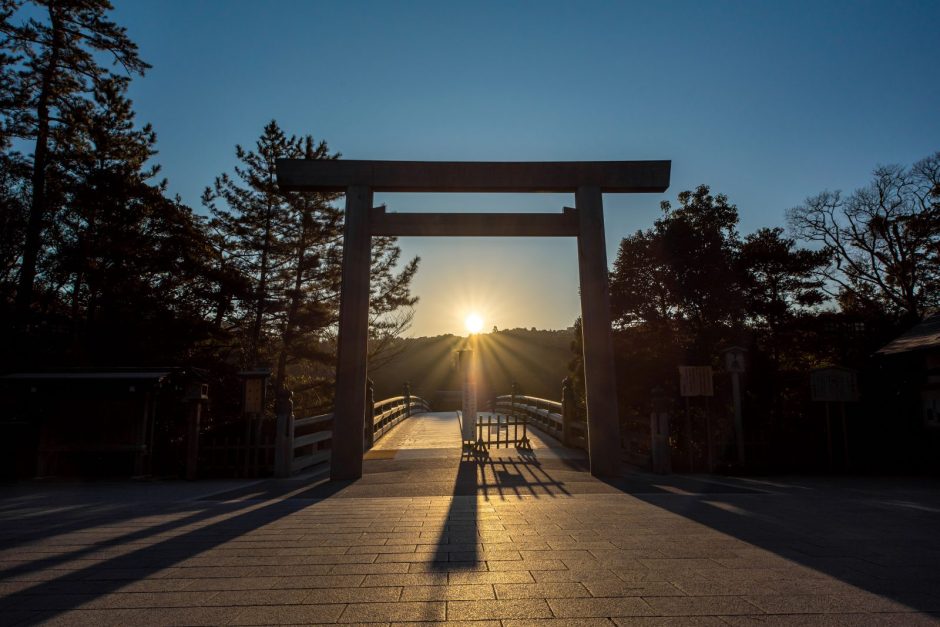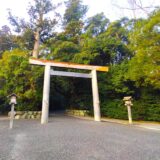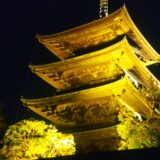【summary】
Ise Jingu is officially called “Jingu” and is commonly referred to as Ise Jingu to distinguish it from other Jingu shrines. The shrine includes the Imperial Grand Shrine (Naiku), which enshrines Amaterasu Omikami, the ancestral deity of the Imperial Family and revered as the great ancestral deity of the people, and the Toyoke Grand Shrine (Outer Shrine), which enshrines Toyoke Omikami, the guardian deity of food, clothing, shelter, and industry. All of these 125 shrines are referred to as “Jingu.
Since the Inner Shrine enshrines Amaterasu Omikami, the deity of the Imperial Family, it has historically had strong ties to the authority of the Imperial Family and the Imperial Court, and the Yatagamagami, the sacred object of the Jingu, is enshrined there. Even today, the shrine is visited by the emperor and empress, and an imperial envoy is dispatched each year to the shrine for the Shinto Tasting Ceremony. Since ancient times, the shrine has had the highest special status, and is now the head shrine of the Jinja Honcho, the “general guardian deity of the people of Japan. In addition to its official status as the ancestral deity of the emperor, Ise Jingu has been worshipped as the “general guardian of the nation” by all classes of people, including the general populace, and has attracted an enormous number of worshippers.
【Precincts Uji Bridge】
![Jingu (Inner Shrine of Ise Jingu) [Mie] DSC 0391 1024x768 - Jingu (Inner Shrine of Ise Jingu) [Mie]](https://japan-shrine.info/wp-content/uploads/DSC_0391-1024x768.jpg)
Ujibashi Torii is the entrance to the Inner Shrine of Ise Jingu.
![Jingu (Inner Shrine of Ise Jingu) [Mie] DSC 0409 1024x768 - Jingu (Inner Shrine of Ise Jingu) [Mie]](https://japan-shrine.info/wp-content/uploads/DSC_0409-1024x768.jpg)
The Uji Bridge over the Isuzu River at the entrance to the Inner Shrine is said to be a bridge connecting the everyday world to the sacred world. Praying at the Inner Shrine begins with bowing in front of the Uji Bridge and crossing it while enjoying the changing seasons of the lush greenery of Mount Jinji and Mount Shimaji.
【Shinto garden (garden)】
![Jingu (Inner Shrine of Ise Jingu) [Mie] DSC 0406 1024x768 - Jingu (Inner Shrine of Ise Jingu) [Mie]](https://japan-shrine.info/wp-content/uploads/DSC_0406-1024x768.jpg)
Crossing the Uji Bridge and going to the right, you will find a very vividly green Shinto garden (garden). I am always amazed at how well the grounds are maintained and not a single piece of trash is left on the ground. The scenery changes with the seasons, and the garden is a wonderful symbol of Japanese beauty. At the end of the garden, you will see a stone-paved washroom said to have been donated by Keishoin, mother of Tsunayoshi Tokugawa, in 1692.
【Mitarashi Mitarashi-jo】
![Jingu (Inner Shrine of Ise Jingu) [Mie] DSC 0395 1024x768 - Jingu (Inner Shrine of Ise Jingu) [Mie]](https://japan-shrine.info/wp-content/uploads/DSC_0395-1024x768.jpg)
Unlike other Shinto shrines, people entering Ise Jingu wash their hands in the Isuzu River. The Isuzu River is also called “Mimosuzogawa,” which means “river of rinsing costumes,” and is said to have been named after Yamatohime no Mikoto (Princess Yamato), who rinsed the sleeves of her costumes. The two streams, the Kamizugawa River originating from Mt. Let’s purify ourselves and our minds with the clear stream of the Isuzu River as in the past before visiting the temple. Do not throw coins into the Trevi Fountain, as it is not a Trevi Fountain!
![Jingu (Inner Shrine of Ise Jingu) [Mie] DSC 0399 1024x576 - Jingu (Inner Shrine of Ise Jingu) [Mie]](https://japan-shrine.info/wp-content/uploads/DSC_0399-1024x576.jpg)
After crossing the Mitarashi place, you will see the second torii (second shrine gate). This is the starting point of the site, and the main shrine is just past this torii. The trees around the shrine are gradually becoming more and more magnificent.
【Tamagaki Minami-Gomon】
![Jingu (Inner Shrine of Ise Jingu) [Mie] DSC 0401 1024x768 - Jingu (Inner Shrine of Ise Jingu) [Mie]](https://japan-shrine.info/wp-content/uploads/DSC_0401-1024x768.jpg)
The public is only allowed to visit the shrine up to the outside of this gate. The white silk mito-bari (cloth) is lowered so that the sacred body cannot be seen. It is said that the Yatagamiko (three-legged mirror) is enshrined here. The Shogu is not a place to make personal requests, but only to offer thanks. (The place to make personal requests is at the Arasakimiya Shrine later in the day.)
Note when visiting the shrine: There are no signs prohibiting photography, but photography is prohibited from the stone steps onward. (You can take pictures only up to the bottom of the stairs). Security guards will be watching you, so please follow the rules. Please do not drive in the wrong direction, as it is a one-way street.
【Precincts, separate shrine, Aramatsumiya Shrine】
![Jingu (Inner Shrine of Ise Jingu) [Mie] DSC 0403 1024x768 - Jingu (Inner Shrine of Ise Jingu) [Mie]](https://japan-shrine.info/wp-content/uploads/DSC_0403-1024x768.jpg)
Located to the north of the Shomiya, the Alamatsurinomiya is the first of the ten separate shrines belonging to the Inner Shrine. Its hall is larger than those of the other separate shrines, and is second in size only to the Shomiya. This is the place to make personal requests. The Ara-matsuri Shrine is the place where you are allowed to make a request because it is close to the stormy soul of Amaterasu, a strong and powerful deity, and the desires of mankind.
![Jingu (Inner Shrine of Ise Jingu) [Mie] DSC 0404 1024x768 - Jingu (Inner Shrine of Ise Jingu) [Mie]](https://japan-shrine.info/wp-content/uploads/DSC_0404-1024x768.jpg)
The Ise Jingu Shrine is the center of Japanese culture and faith and is beloved by many people. Its history and sacred atmosphere are deeply embedded in the hearts of the Japanese people, and a visit to Ise Jingu Shrine is an opportunity to experience the traditions and spirit of Japan.
【Jingu (Inner Shrine of Ise Jingu) GOSHUIN】
![Jingu (Inner Shrine of Ise Jingu) [Mie] isejingu 717x1024 - Jingu (Inner Shrine of Ise Jingu) [Mie]](https://japan-shrine.info/wp-content/uploads/isejingu-717x1024.jpg)
【Nearby attractions】
【Access】
Manager’s Comments
There was an air of holiness in the air that was unparalleled. I think Ise Jingu is a unique and sacred place. Visit at around 8:30 a.m. It gets crowded after 10:00 a.m., so it’s best to come early. Visit Oise-san at least once in your life! Ise-san is a once-in-a-lifetime experience.
 Tour of Japanese shrines and temples
Tour of Japanese shrines and temples 

![Jingu (Inner Shrine of Ise Jingu) [Mie] DSC 0376 520x300 - Jingu (Inner Shrine of Ise Jingu) [Mie]](https://japan-shrine.info/wp-content/uploads/DSC_0376-520x300.jpg)
![Jingu (Inner Shrine of Ise Jingu) [Mie] DSC 0426 520x300 - Jingu (Inner Shrine of Ise Jingu) [Mie]](https://japan-shrine.info/wp-content/uploads/DSC_0426-520x300.jpg)

